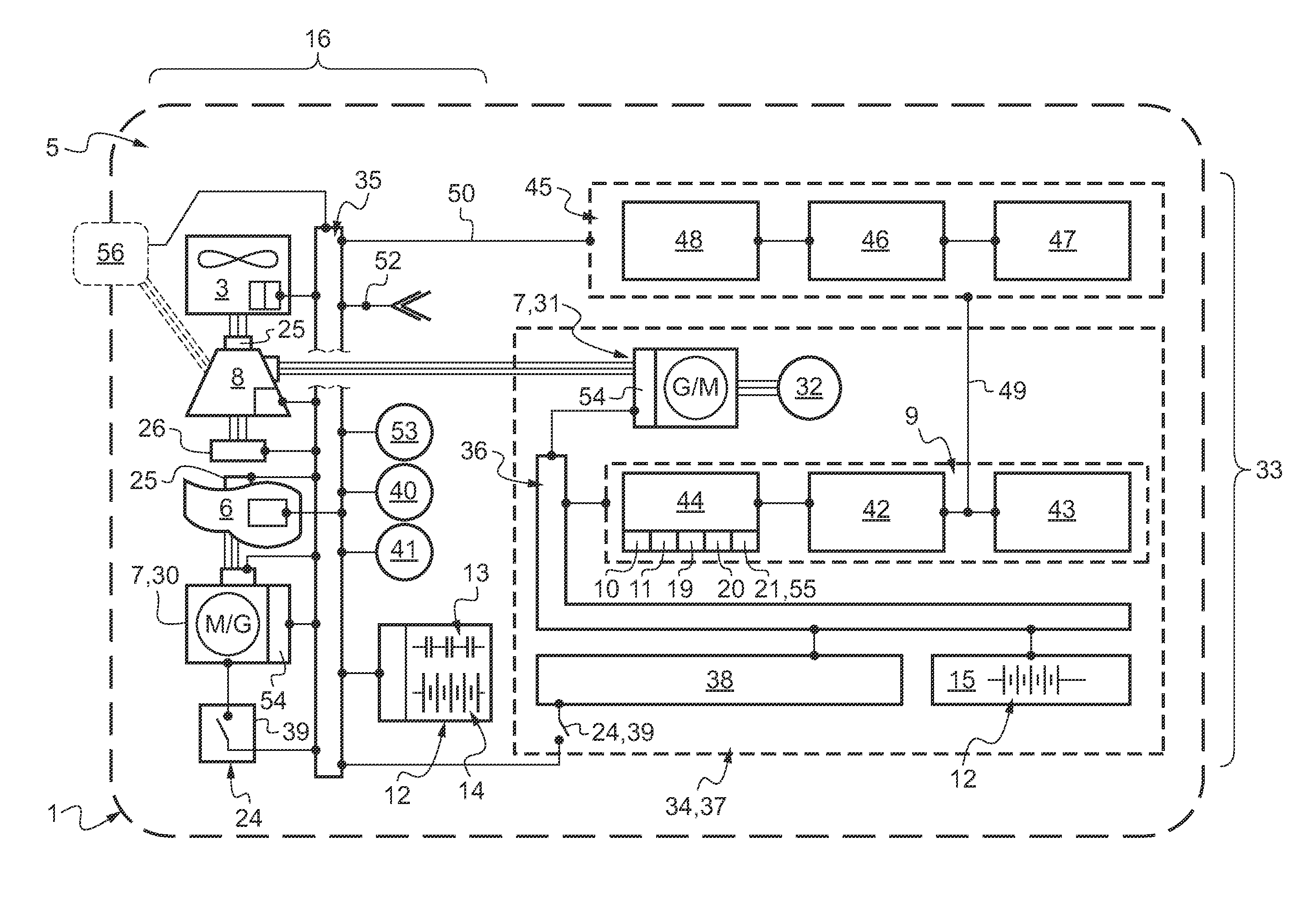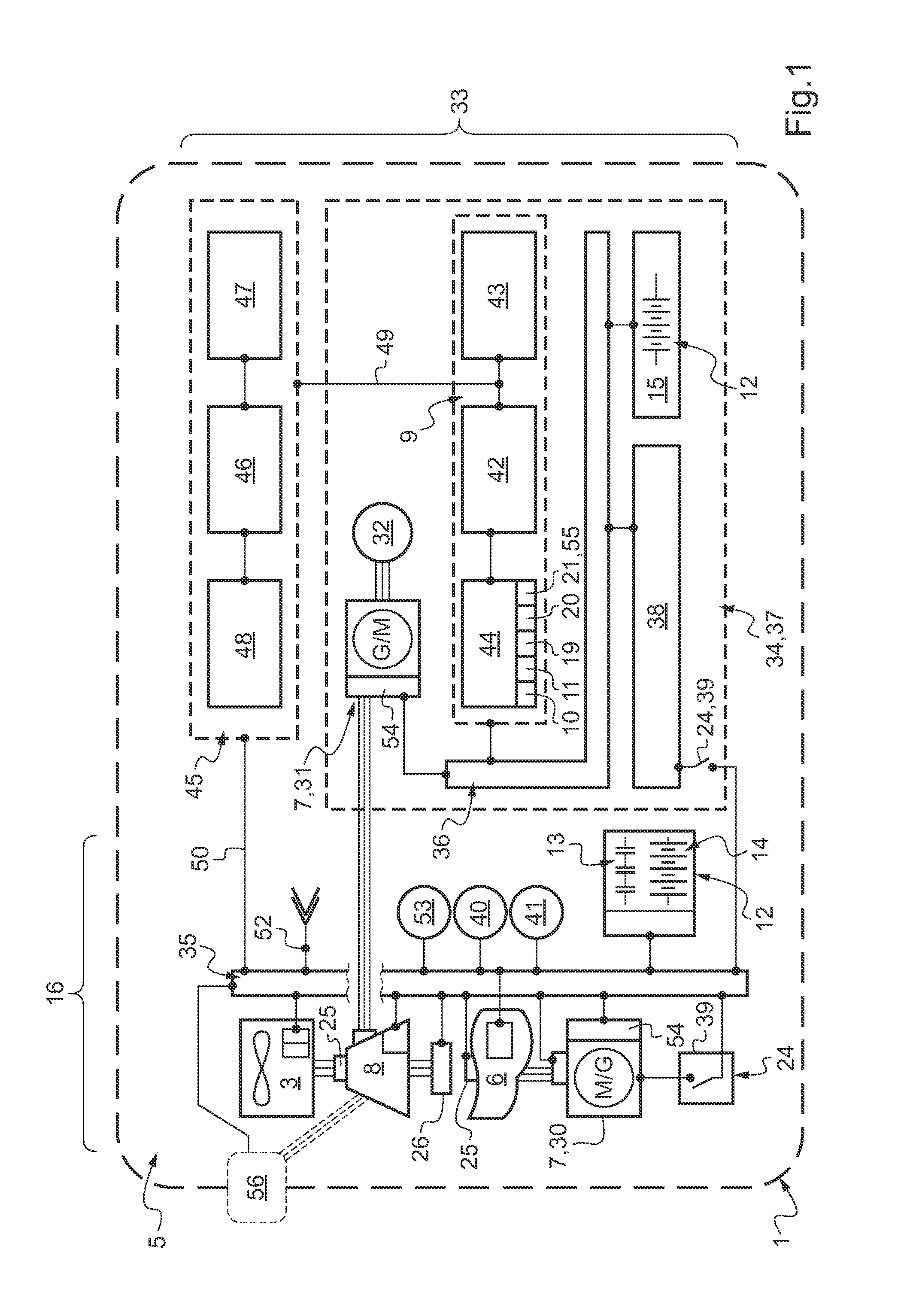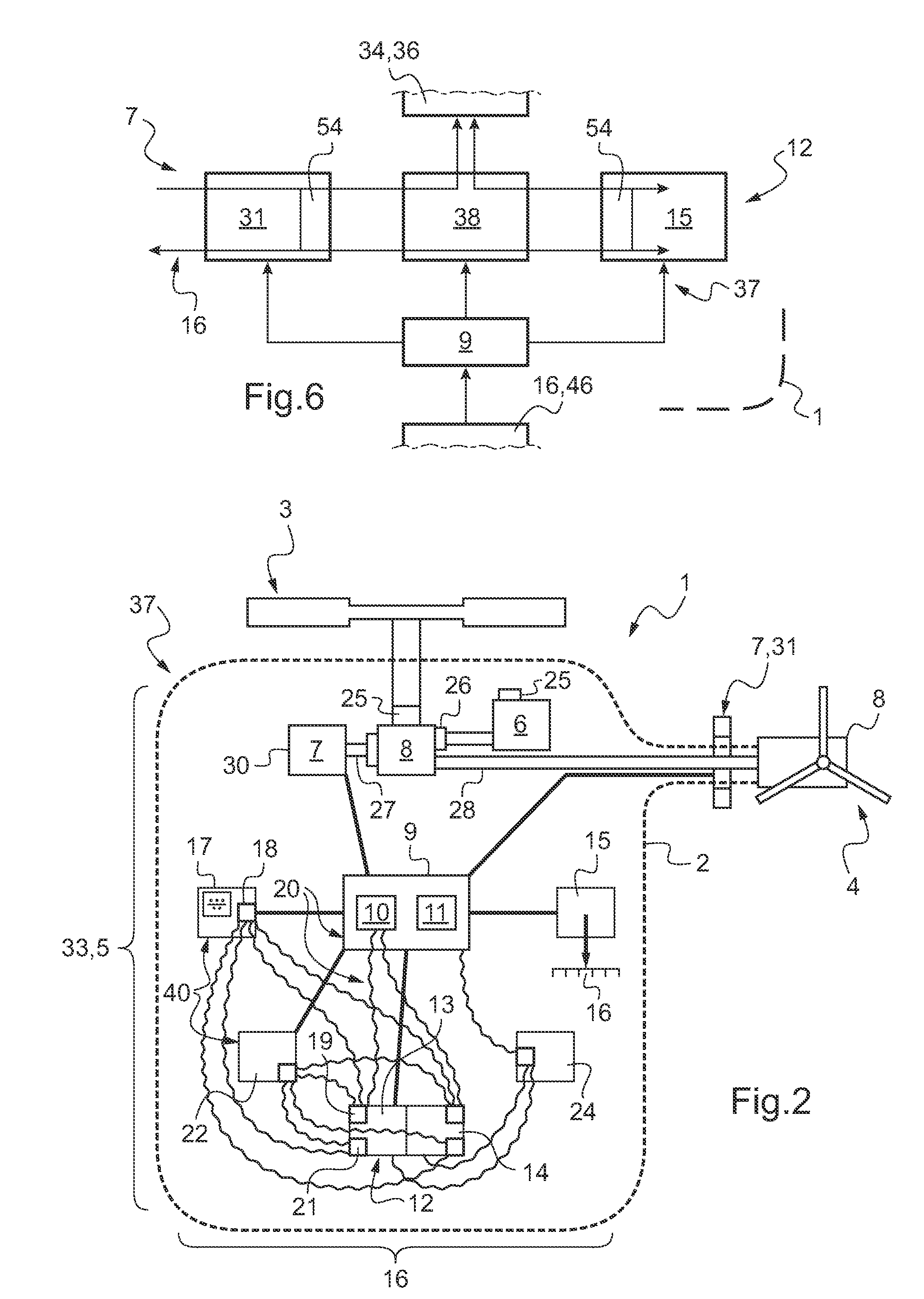Electrical architecture for a rotary wing aircraft with a hybrid power plant
a hybrid power plant and electric architecture technology, applied in the field of rotary wing aircraft, can solve the problems of reducing the options of making architectures and their components, conflicting with having any guarantee of electrical architecture capability, and reducing the number of electrical architectures, so as to achieve the effect of effective lightening the load on the engine, saving overall energy consumption, and considerable ecological impact of invention
- Summary
- Abstract
- Description
- Claims
- Application Information
AI Technical Summary
Benefits of technology
Problems solved by technology
Method used
Image
Examples
Embodiment Construction
[0094]Embodiments of the invention are described below with reference to the figures.
[0095]FIG. 2 shows a rotary wing aircraft 1, here in the form of a helicopter, having an airframe 2, a main lift rotor 3, and an anti-torque tail rotor 4. A power plant 5 comprises a (main) engine 6 and two electrical machines 7 contributing to providing drive. These two machines 7 are coupled mechanically to at least one transmission 8. In this example, each of these two machines 7 is mechanically coupled to a respective distinct gearbox, one to the main gearbox (MGB) and the other to the tail gearbox (TGB).
[0096]Naturally, most of the components of the power plant 5 also include power electronics. This applies in particular when the machine(s) 7 is / are usable as electric motors.
[0097]In this example, one of the electrical machines 7 (referenced 30 and referred to as an electric starter with a generator function) is coupled directly only to the main gearbox 8 or MGB, which is also coupled mechanica...
PUM
 Login to View More
Login to View More Abstract
Description
Claims
Application Information
 Login to View More
Login to View More - R&D
- Intellectual Property
- Life Sciences
- Materials
- Tech Scout
- Unparalleled Data Quality
- Higher Quality Content
- 60% Fewer Hallucinations
Browse by: Latest US Patents, China's latest patents, Technical Efficacy Thesaurus, Application Domain, Technology Topic, Popular Technical Reports.
© 2025 PatSnap. All rights reserved.Legal|Privacy policy|Modern Slavery Act Transparency Statement|Sitemap|About US| Contact US: help@patsnap.com



